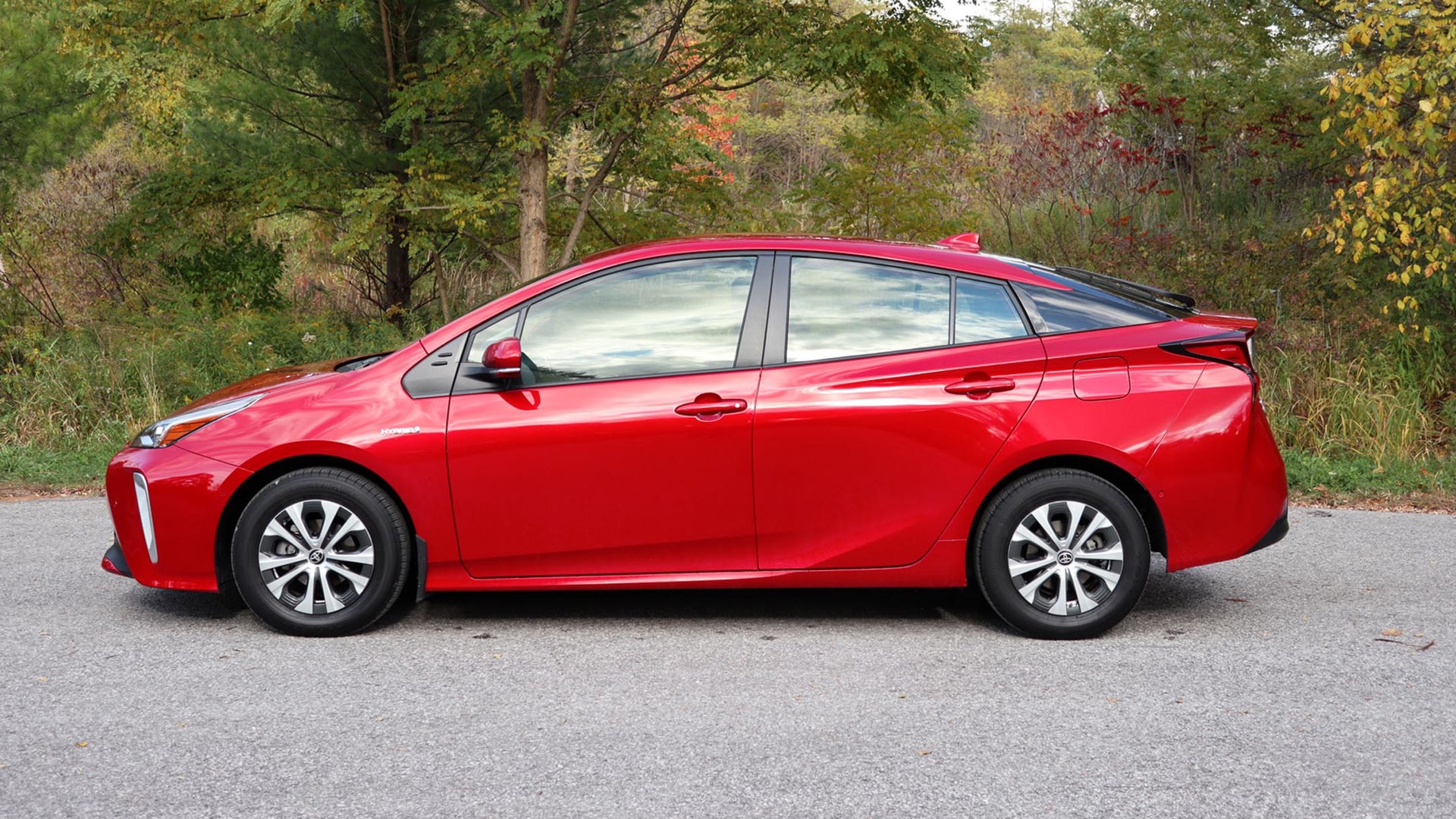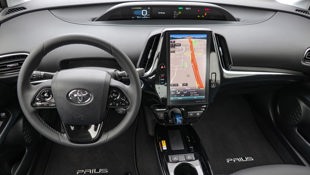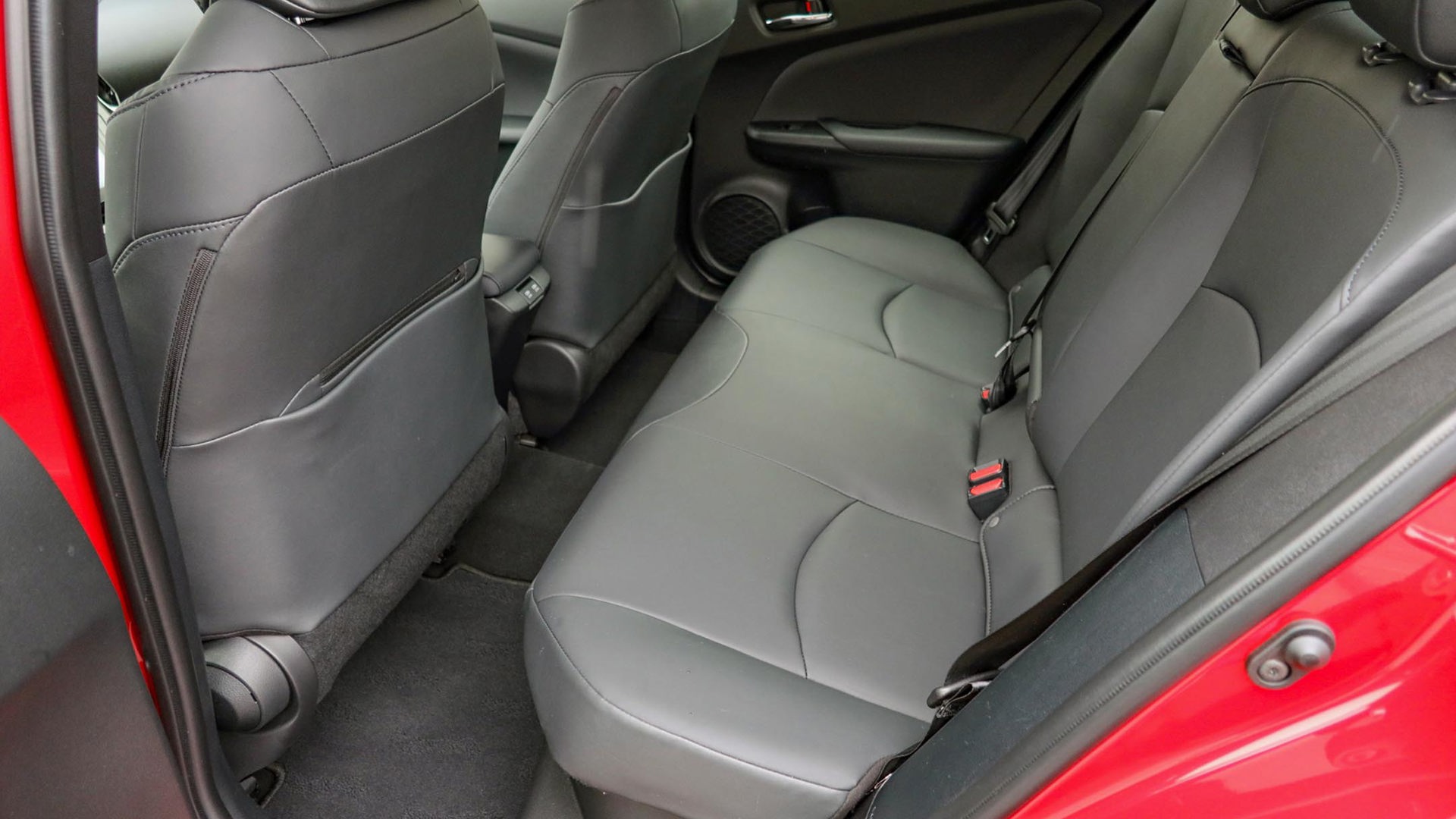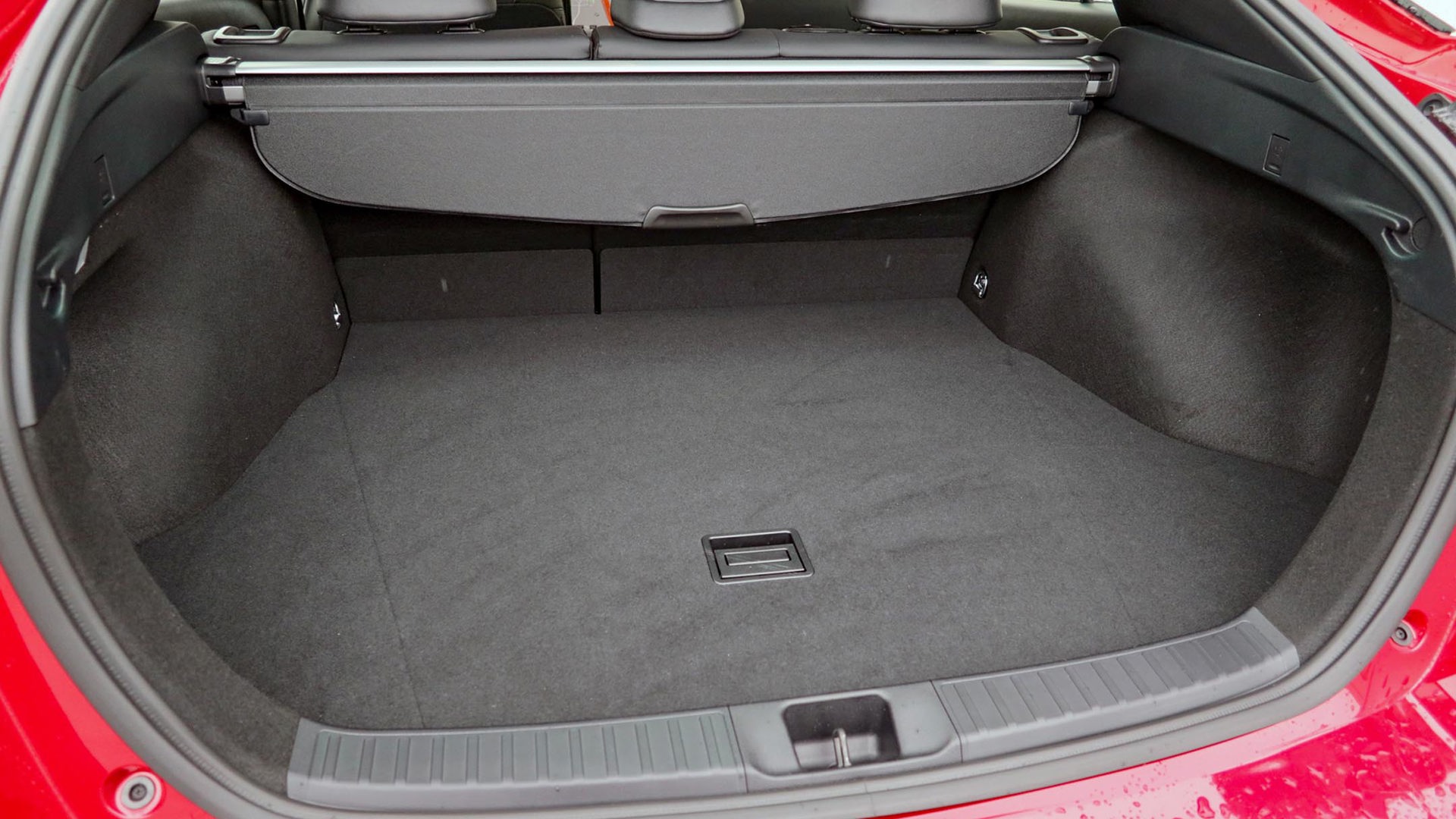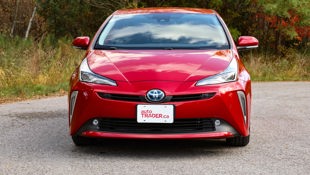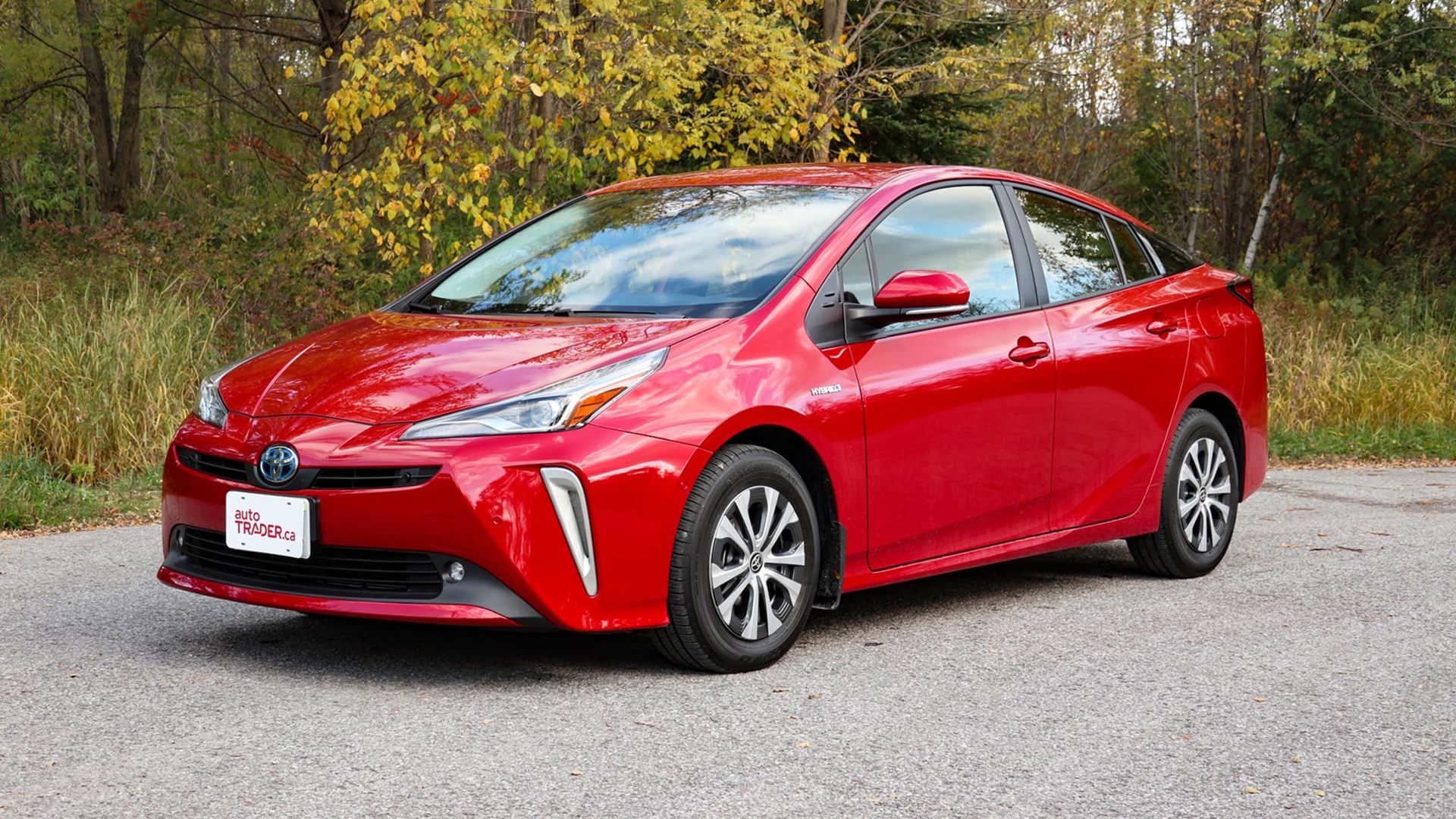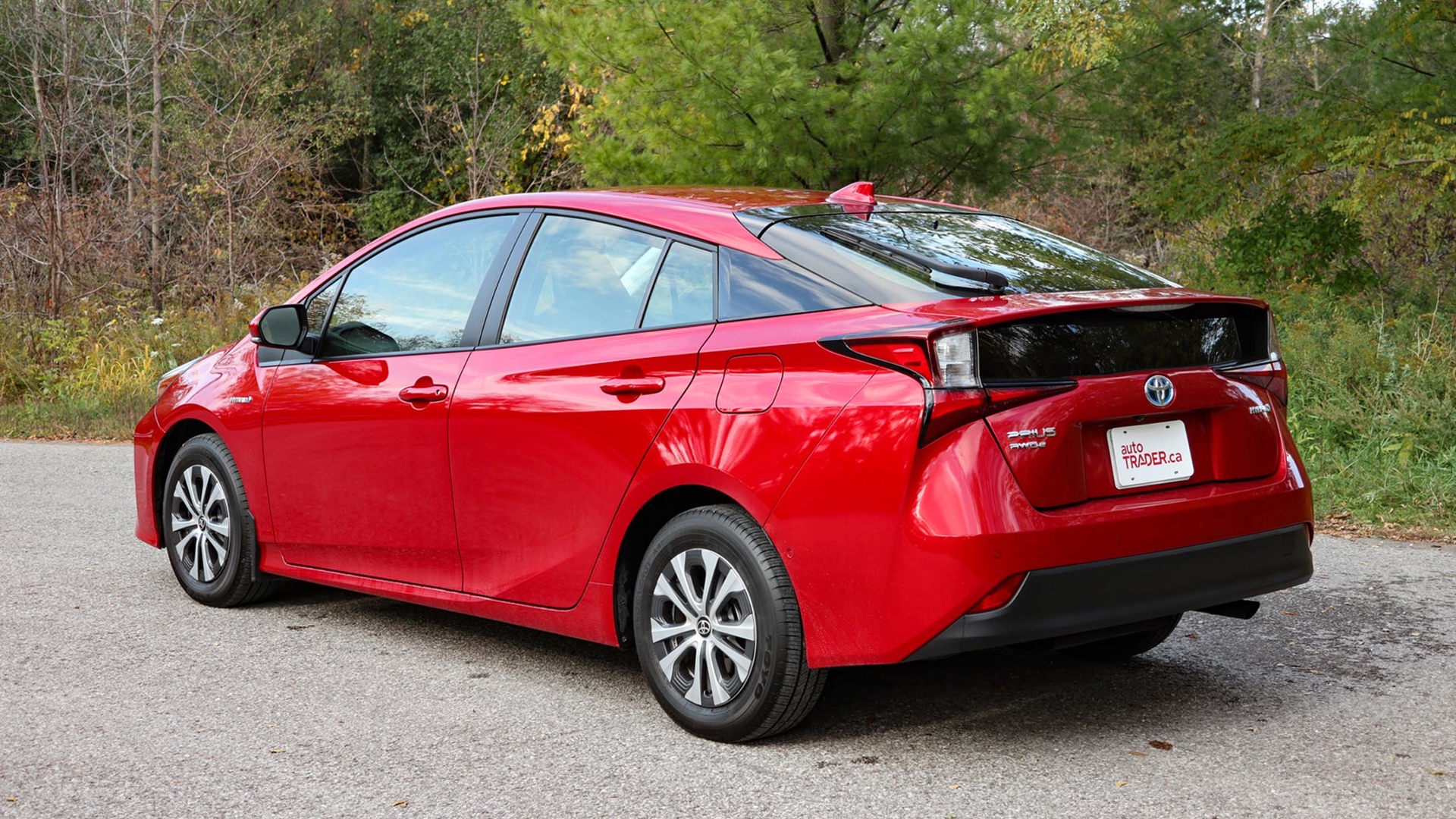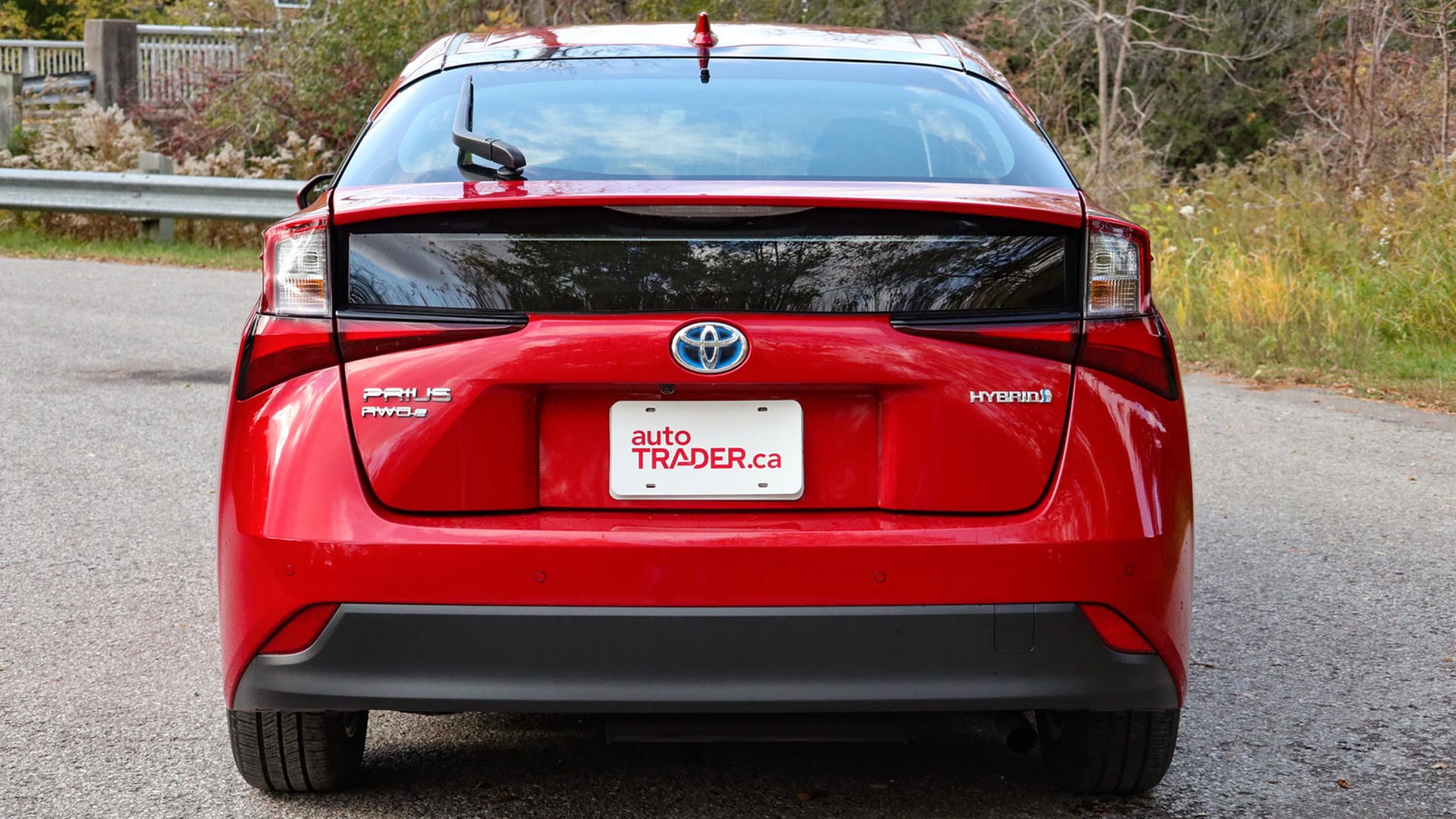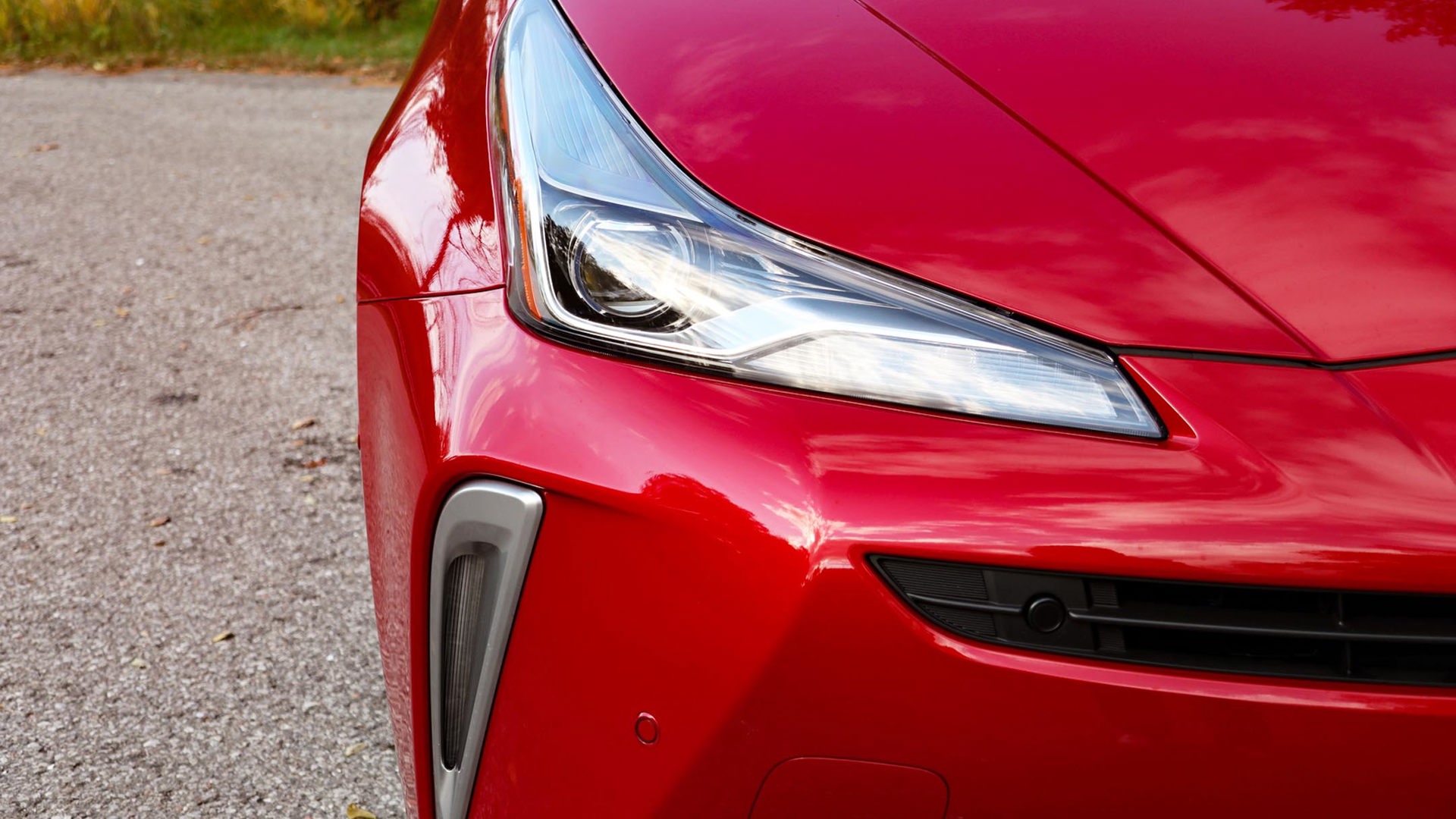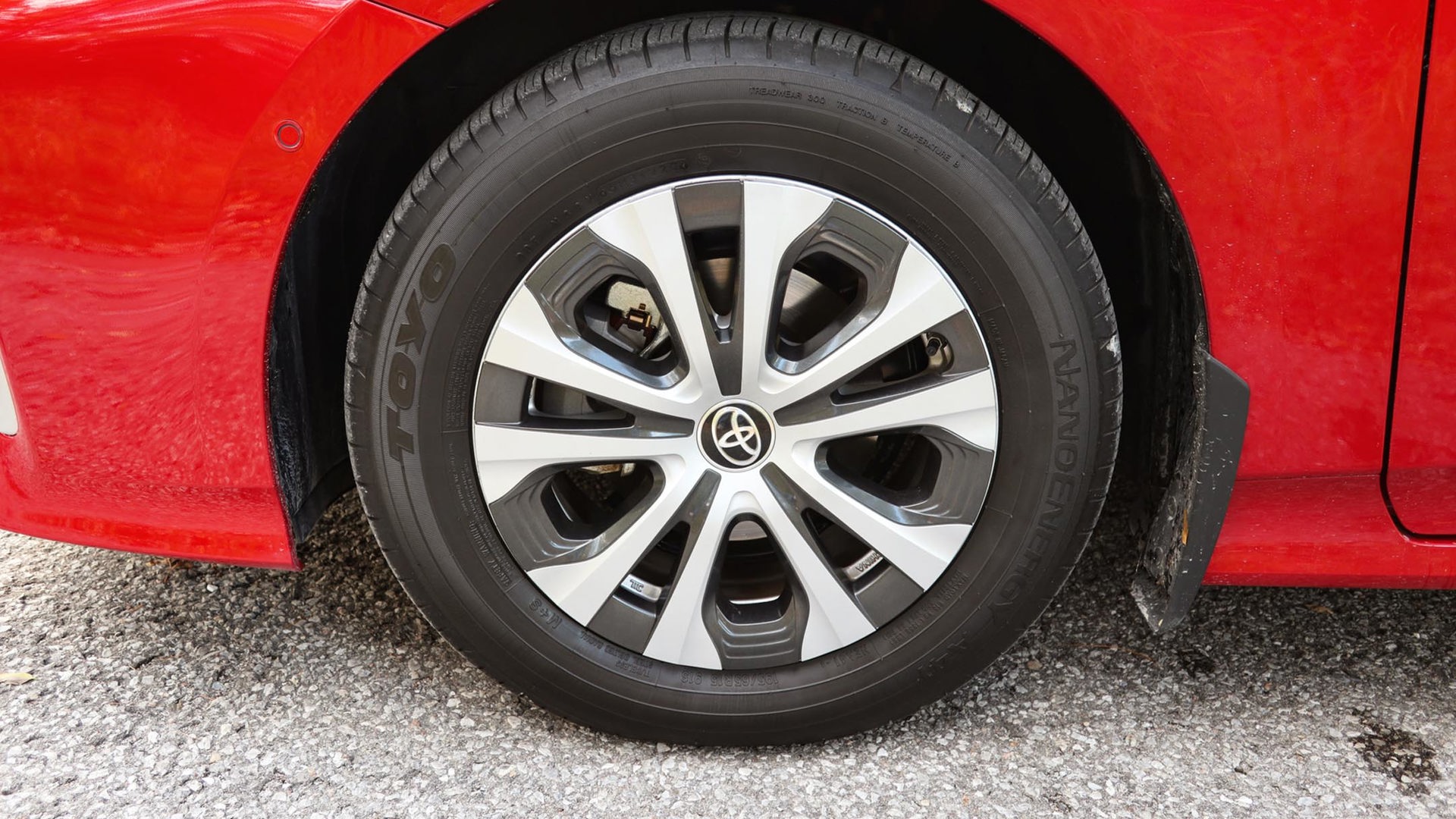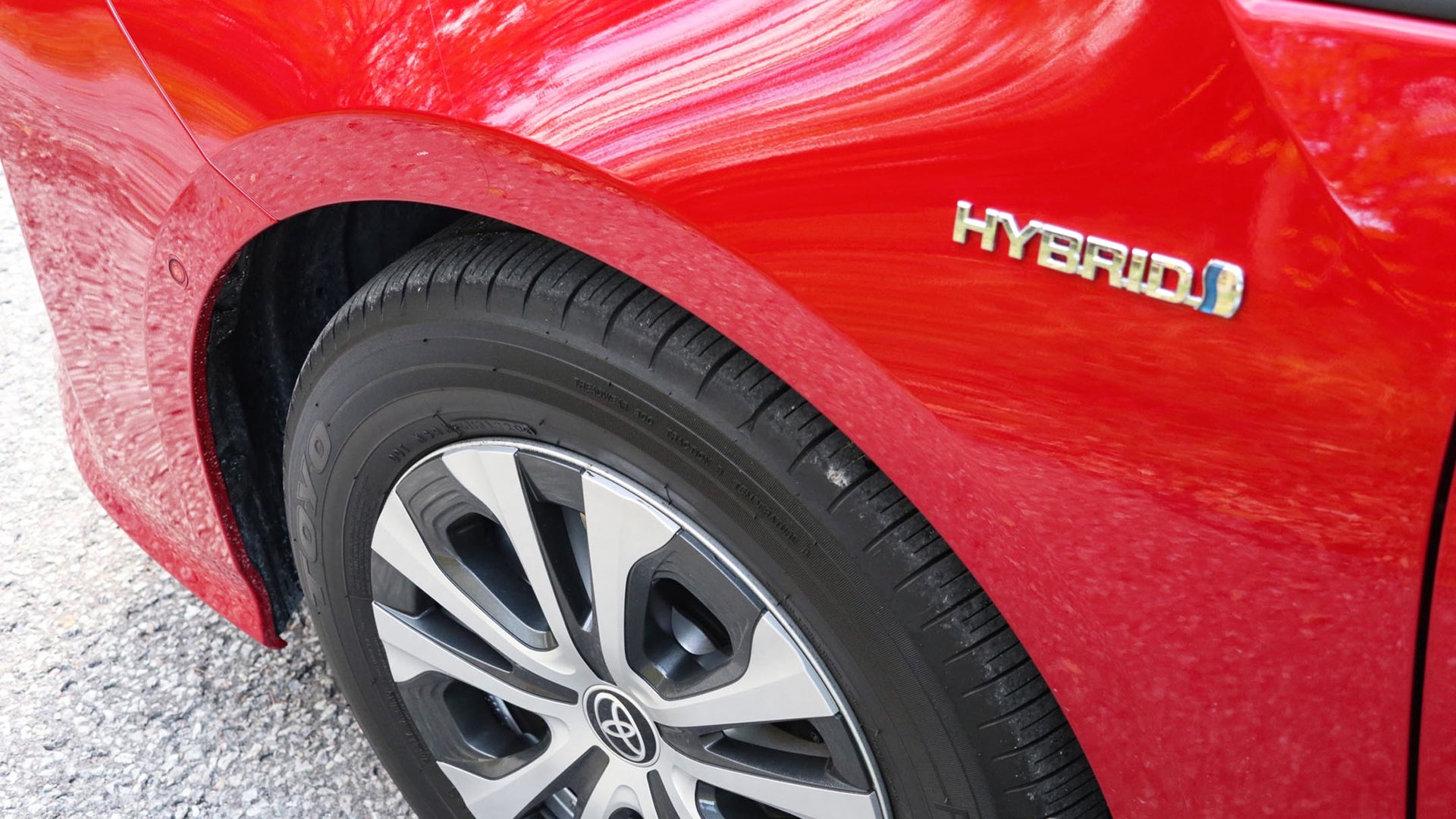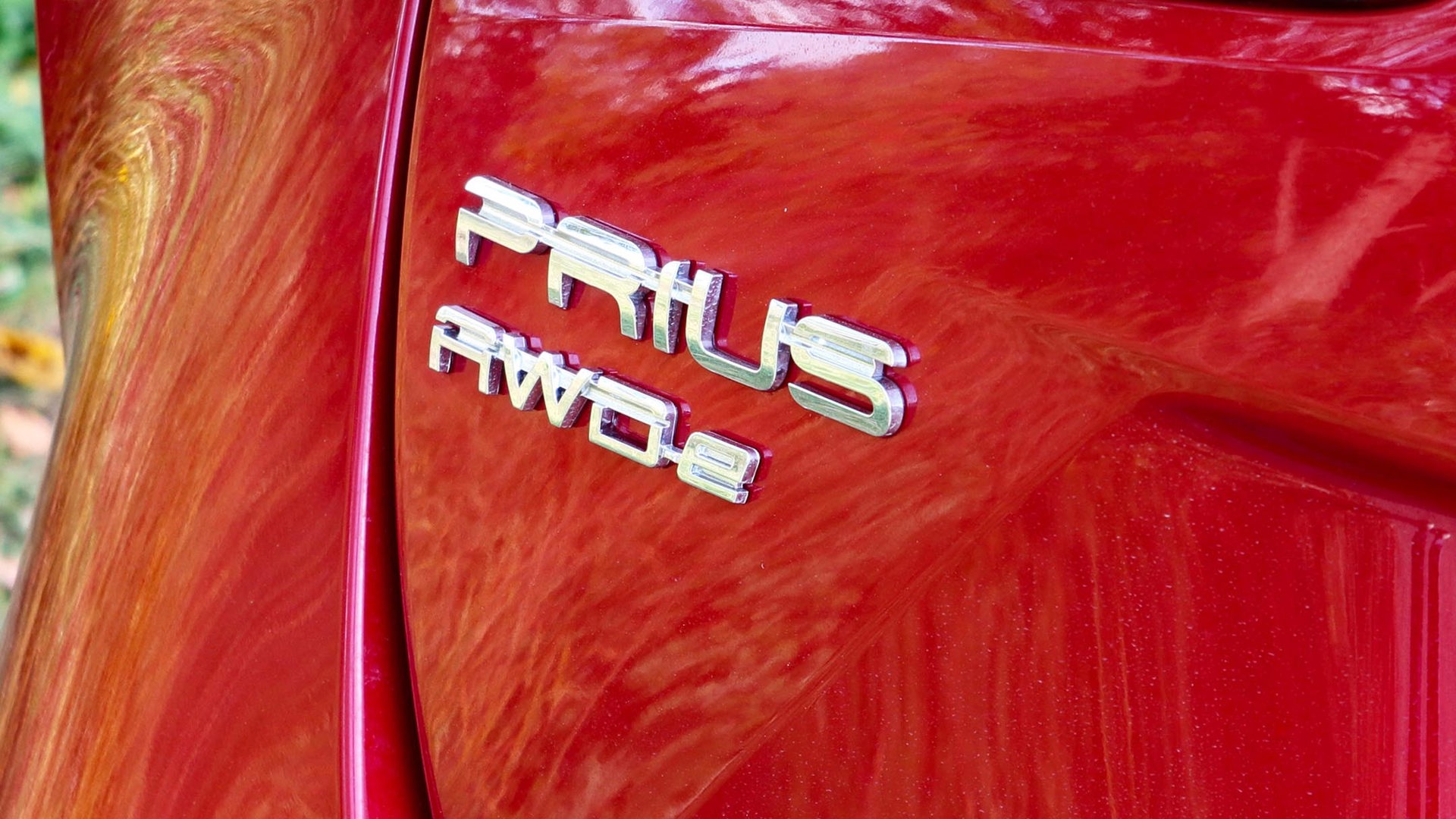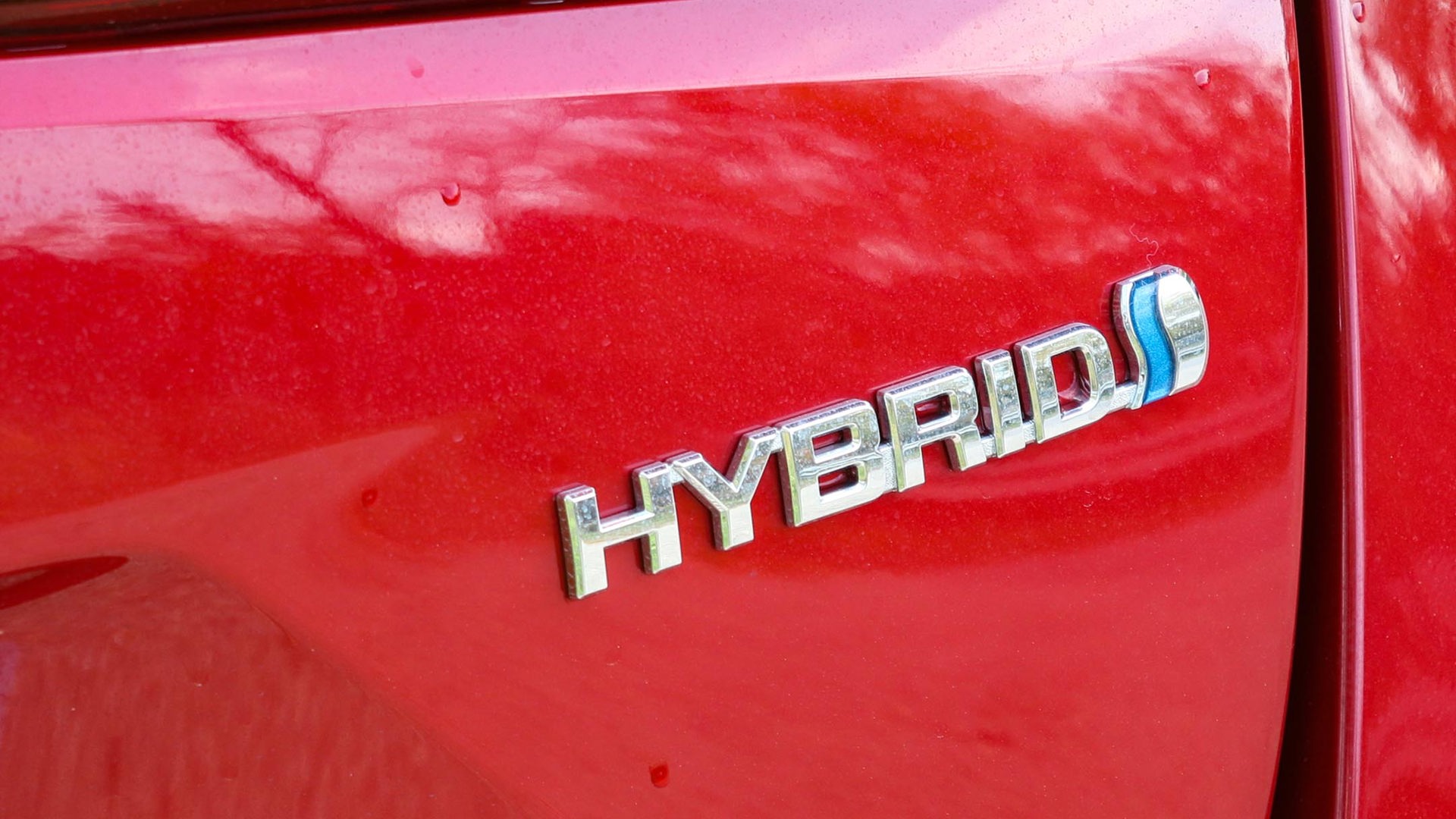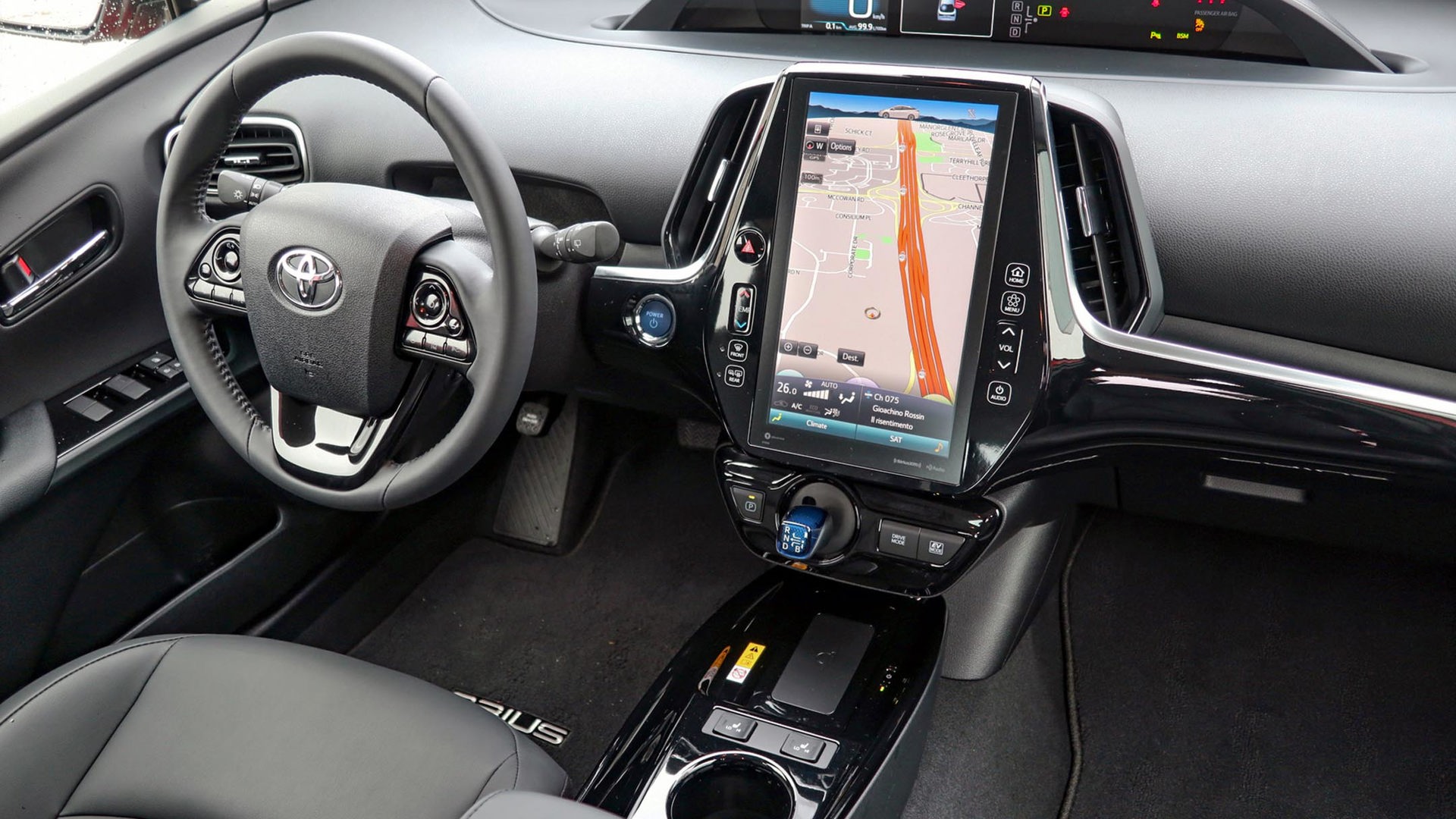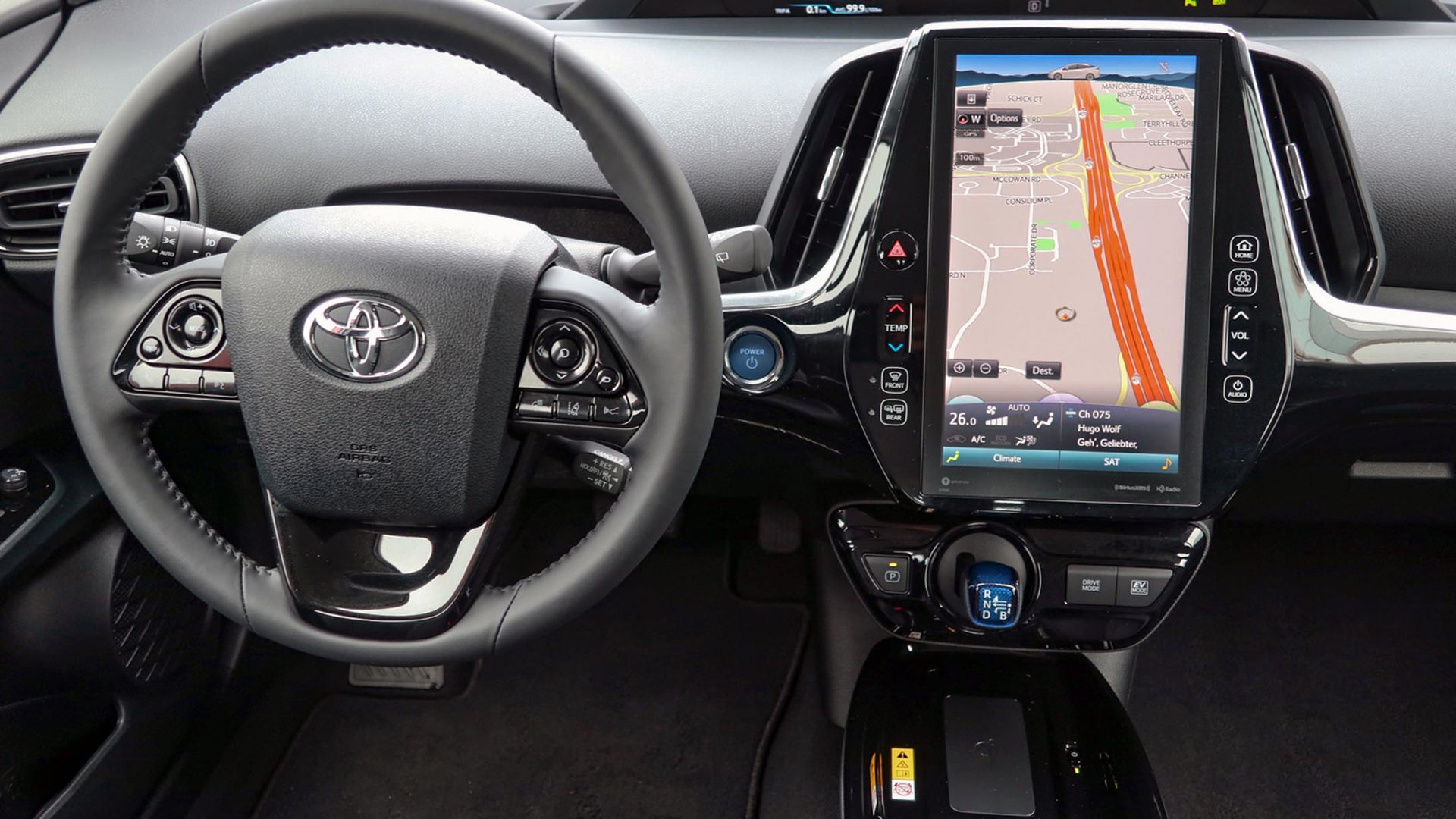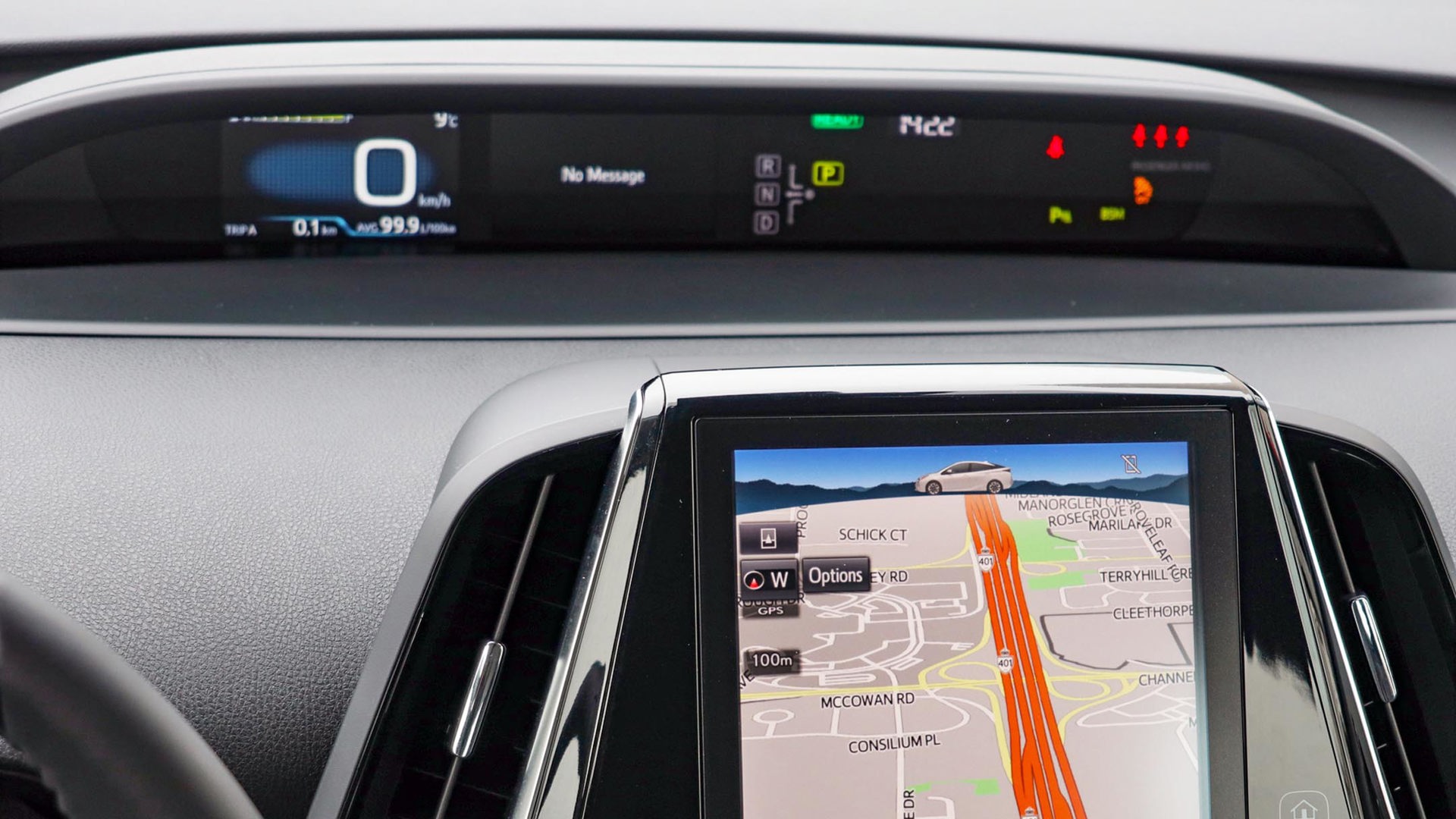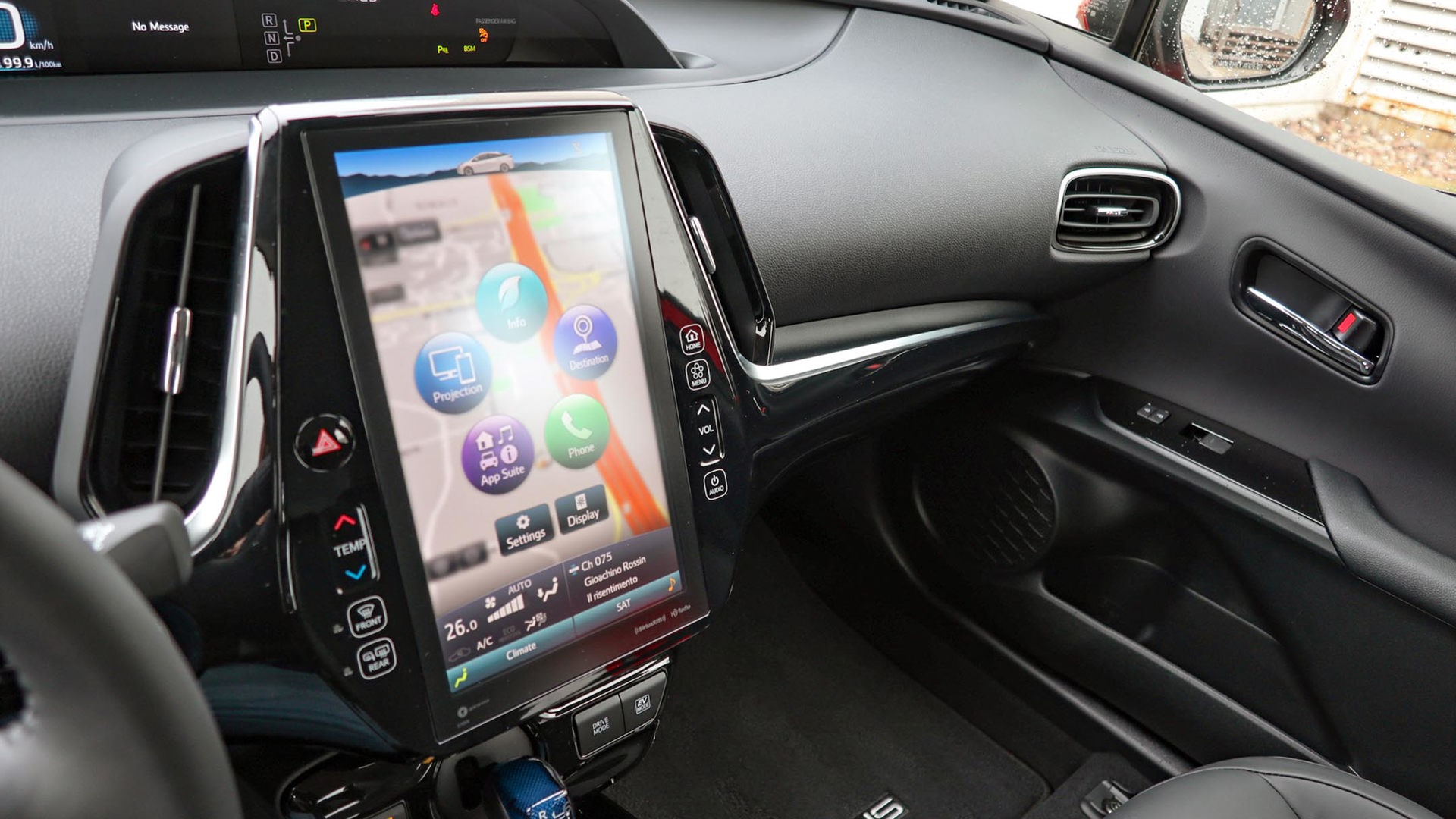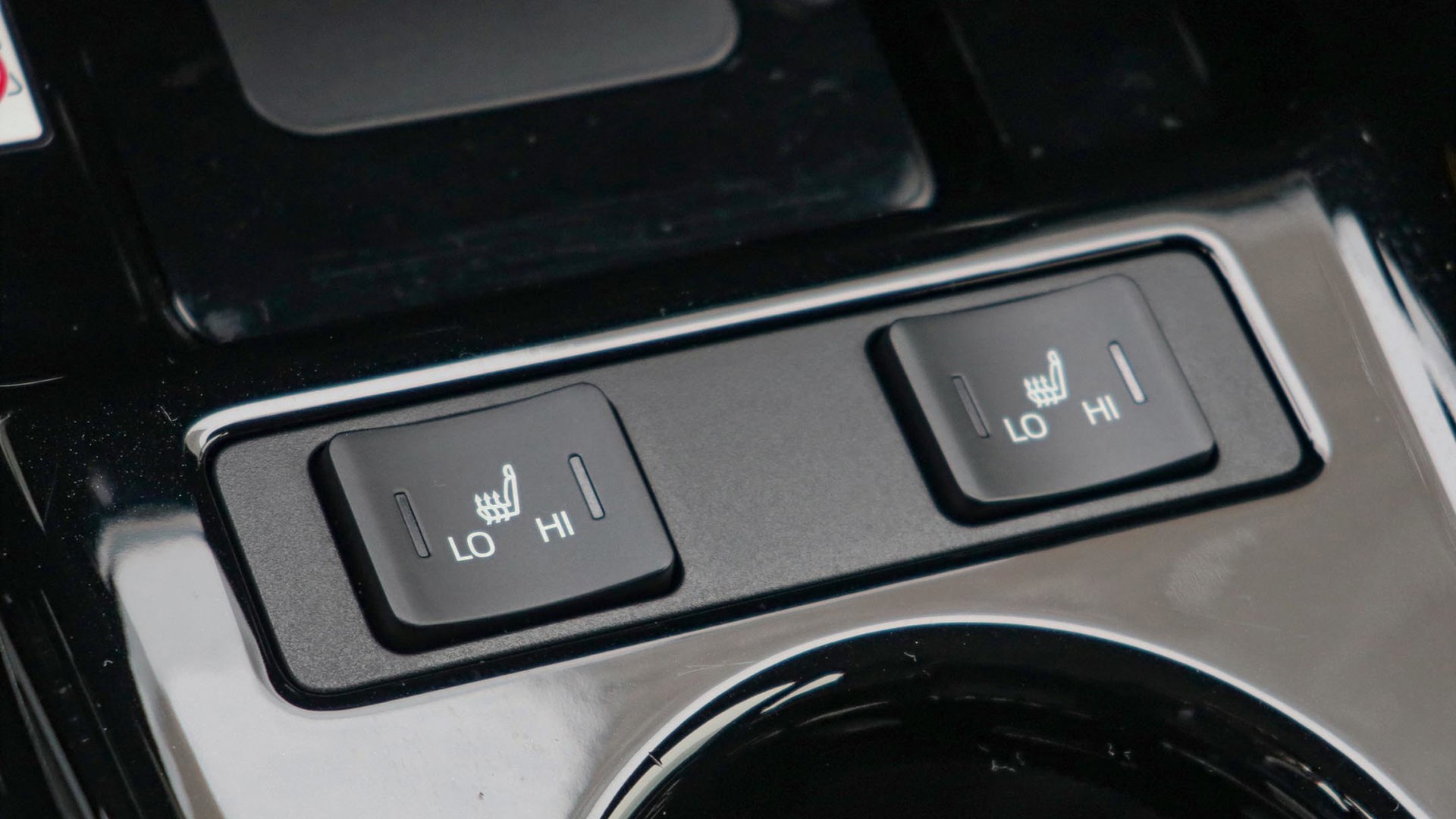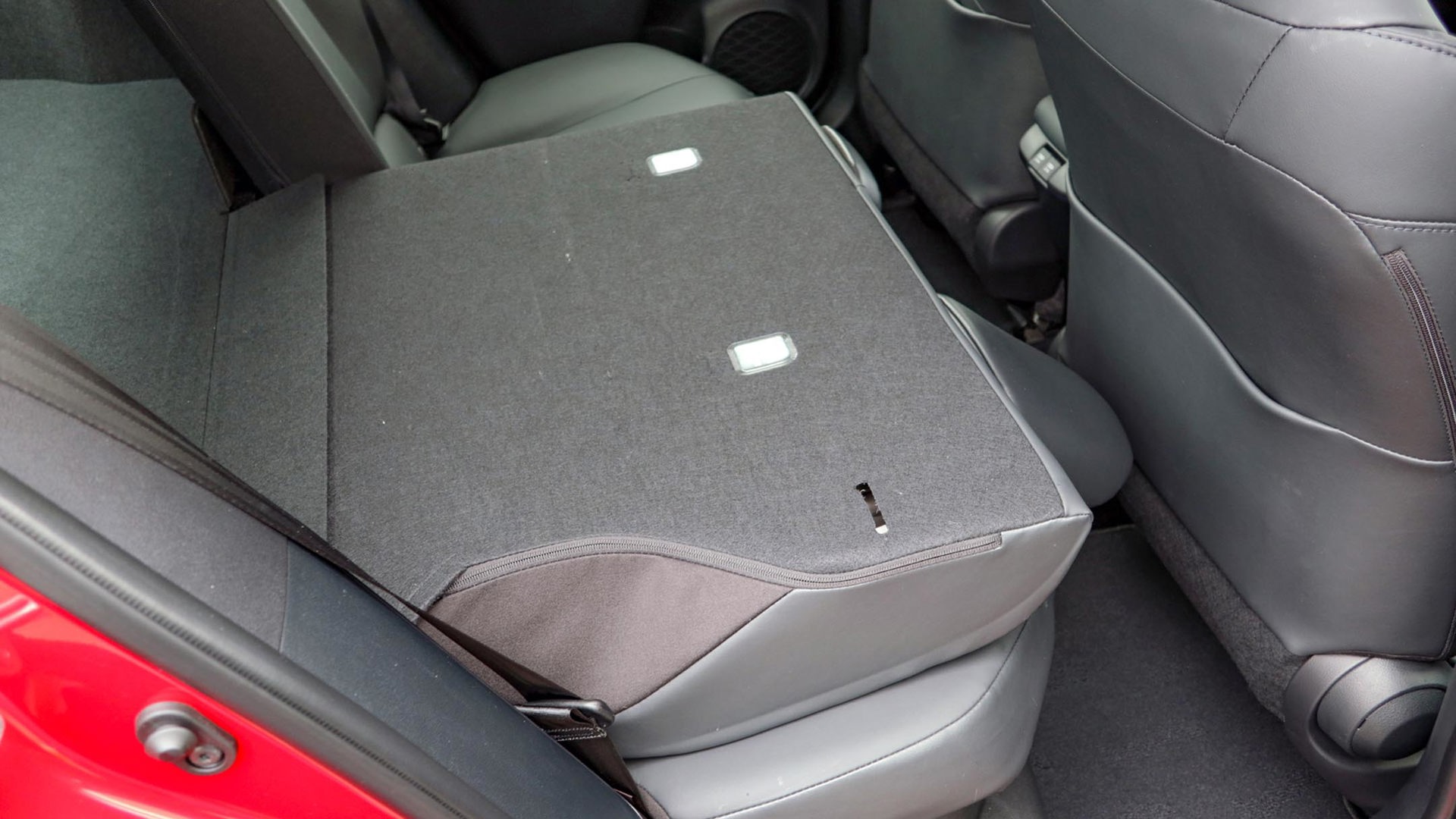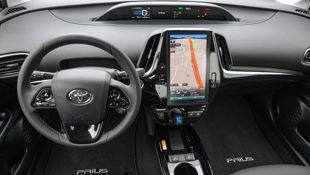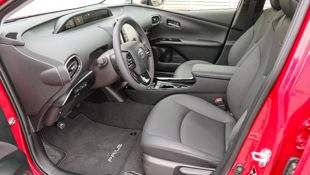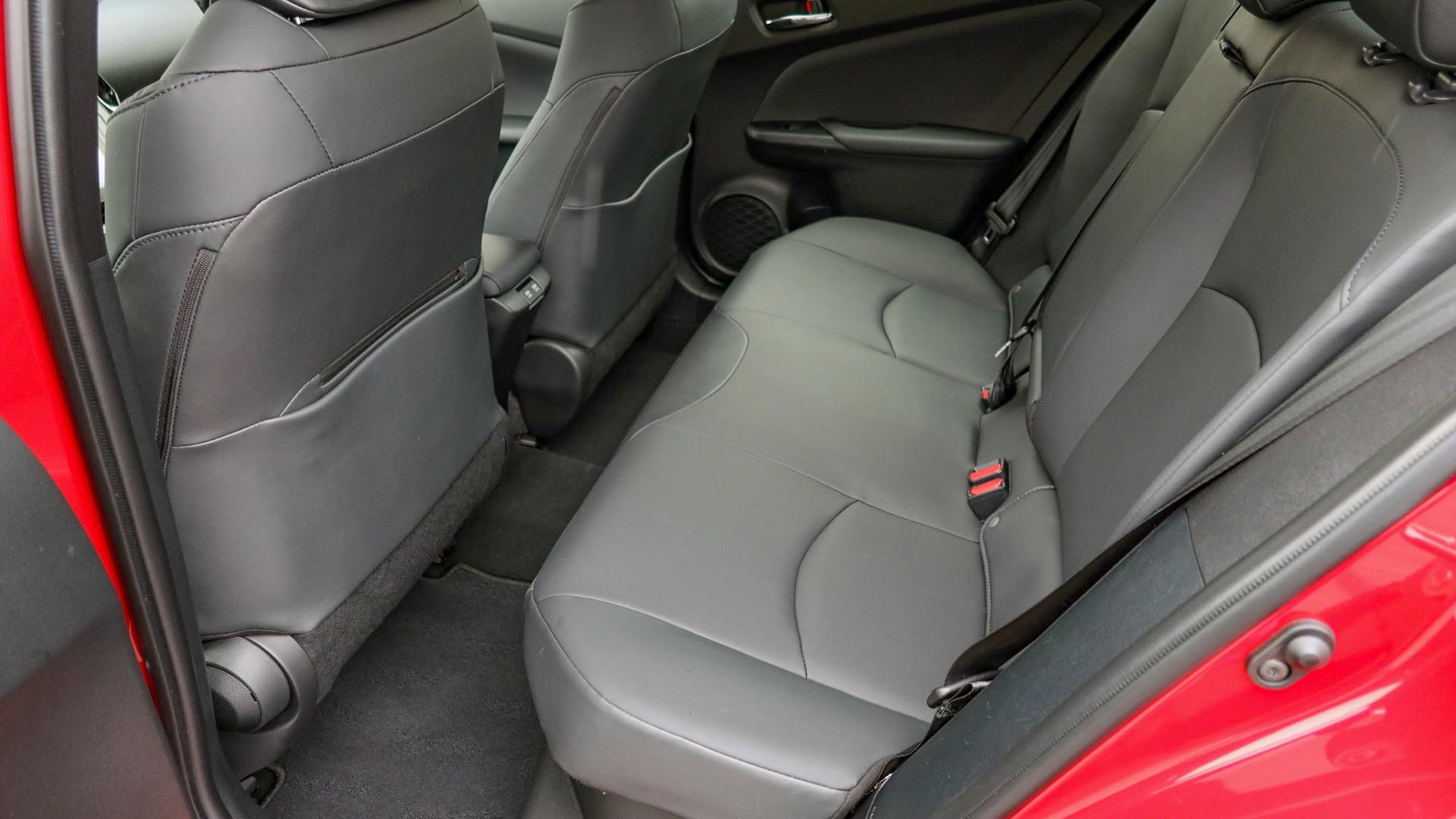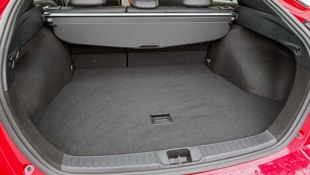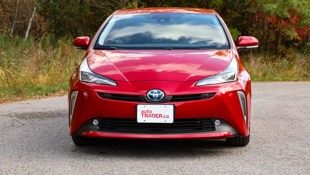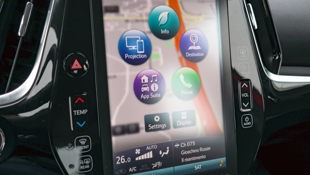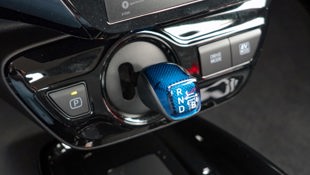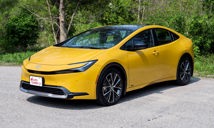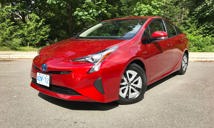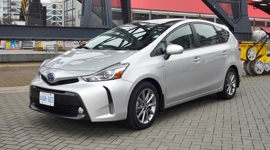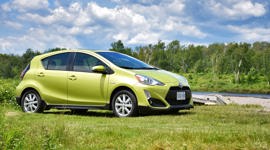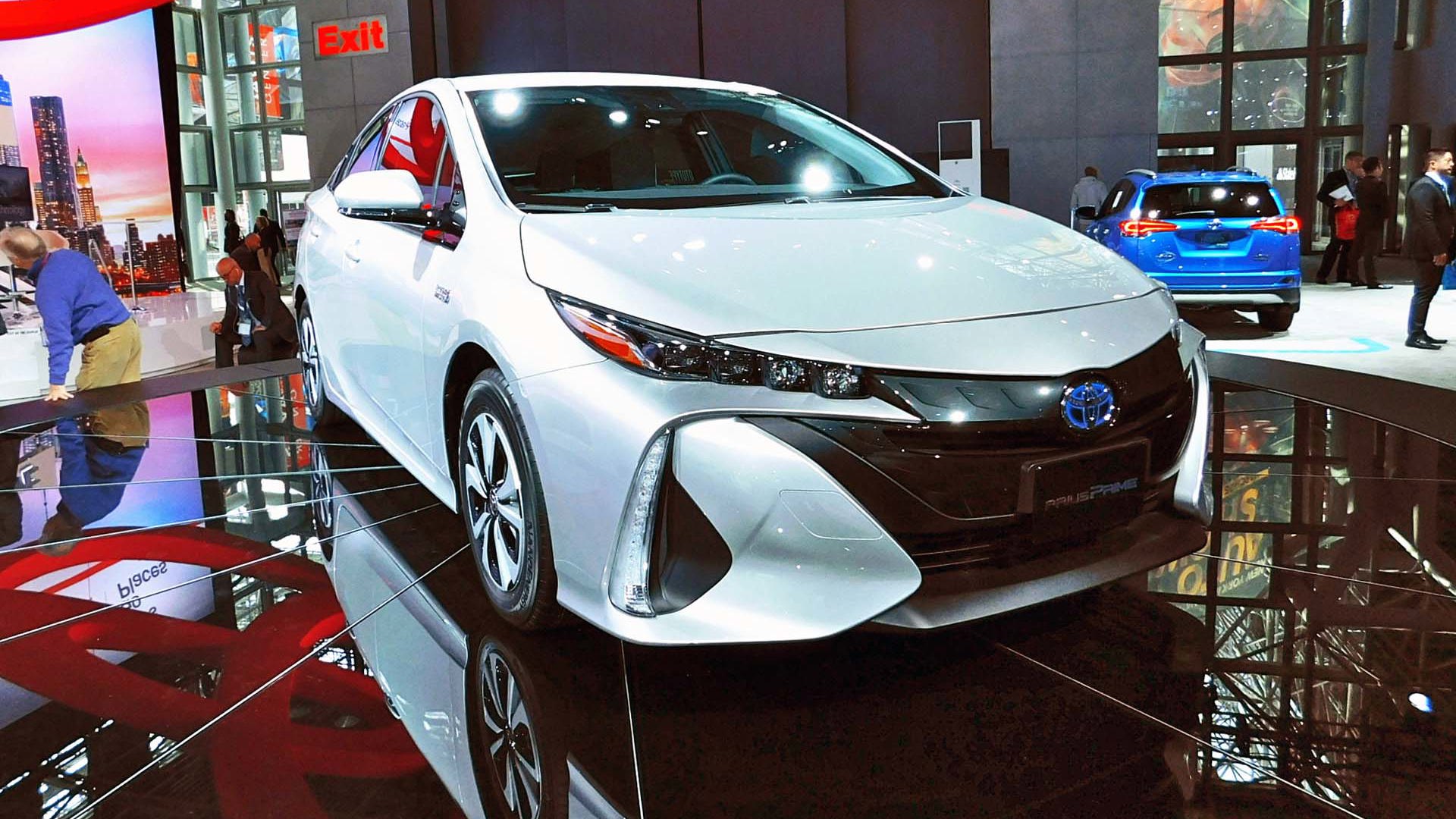 AutoTrader SCORE
AutoTrader SCORE
-
STYLING7/10
-
Safety9/10
-
PRACTICALITY8/10
-
USER-FRIENDLINESS6/10
-
FEATURES8/10
-
POWER8/10
-
COMFORT8/10
-
DRIVING FEEL8/10
-
FUEL ECONOMY9/10
-
VALUE8/10
Toyota’s Prius has been around for more than 20 years now, and there’s a reason for that longevity.
It does exactly what it’s supposed to do and does it well, with near-seamless performance while it sips at its fuel supply. It’s also available a number of ways, including as a plug-in hybrid (PHEV), and a couple of conventional hybrid models, including this 2021 Toyota Prius AWD-e. That’s right: all-wheel drive. In a Prius.
It starts at $29,690, which is $1,040 more than a Prius that powers only its front wheels. I had the next level up, the $32,050 Technology trim, and from there, an added Advanced package for $3,270 and a $255 paint job, bringing my ride to $35,575 before freight and taxes.
Styling: 7/10
Looks are subjective, but no matter what you think of the Prius, it certainly isn’t easily mistaken for anything else. If you prefer to stay more under the radar, the Corolla and Camry are also available in hybrid versions.
All Prius trim levels include LED head- and taillights, and 15-inch alloy wheels – not as snazzy as the larger rims that are popular these days, but you’ll appreciate them when you price out winter tires. The AWD-e model adds a set of fog lights, too. On both the Prius and Prius AWD-e, moving up to the Technology trim adds a sunroof, rain-sensing wipers, and lock sensors on the door handles (tap them when the key’s in your pocket, and the car locks or unlocks).
Safety: 9/10
The United States National Highway Traffic Safety Administration (NHTSA) gives the Prius its highest five-star rating overall, but that includes a four-star grade for its frontal crash protection. The Insurance Institute for Highway Safety (IIHS) sees it similarly, giving the car its highest “Good” rating for all but the passenger-side small overlap crash test, where it gets the next-step-down of “Acceptable.”
The IIHS also rates it “Acceptable” for its headlights, but “Superior” for its emergency front braking for crash mitigation, both for vehicle-to-vehicle and pedestrians, and “Good+” for how easy its child seat latches are to use.
All Prius trims have a package of safety technologies as standard equipment, which includes adaptive cruise control, emergency front braking with pedestrian and cyclist recognition, lane-departure assist and lane-centring, and automatic high-beams. The Technology models further add blind-spot monitoring with rear cross-traffic alert.
Practicality: 8/10
Hatchbacks tend to be practical by nature, and the Prius carries that through with a wide rear opening, and a relatively low lift-over to get your goods over the bumper.
The all-wheel-drive Prius has slightly less cargo space than the front-wheel model – 697 L for AWD-e, versus 776 L for the two-wheel version – but the rear seats are easy to fold flat when carrying longer items.
User Friendliness: 6/10
Something I cannot figure out is automakers that spend gobs of cash on an ever-increasing number of high-tech safety features, and then add an ever-increasing number of distracting infotainment and climate controls. In this case, my tester’s Advanced package swapped out the Prius’ usual seven-inch touchscreen for an 11.6-inch display, which also moves several functions behind the glass.
Steps are required for almost everything, since you first have to tap the screen to bring up the menu, and then tap it to activate the function. There are some hard buttons, including for temperature and volume, but they’re toggle switches, which aren’t as quick and easy to use as a dial. There are redundant controls on the steering wheel for some functions, but everything should be simple, not some things simpler than others. And when the sun hits that big screen, it washes out with glare, and then you can’t see any functions to tap.
Features: 8/10
At the entry level, the Prius includes automatic climate control, heated mirrors, cloth seats, multi-information display, seven-inch infotainment touchscreen, and Apple CarPlay and Android Auto. The Technology trim adds wireless charging, heated seats and steering wheel, power sunroof, blind-spot monitoring, and rain-sensing wipers.
My tester’s Advanced kit, at $3,525, added the 11.6-inch touchscreen, garage door opener, navigation, auto-levelling headlights, head-up display (HUD), and parking assist – but, oddly enough, deletes Android Auto and leaves only the Apple system. If you priced a Prius for 2020, you’ll note the Advanced package was only $1,800 back then. Its meteoric rise (and the Prius Technology’s correspondingly lower price for 2021) was due to items taken out of the Technology trim’s list of standard features, and bundled into the option package. I’m good with that, because it means I can now get a Technology without having to take the oversized touchscreen that used to be included on it.
Power: 8/10
The Prius contains a 1.8L four-cylinder engine that, on its own, makes 96 hp and 105 lb-ft of torque. When combined with the hybrid system’s electric motors, you get 121 net hp. That doesn’t sound like a huge amount, but it’s enough to move the Prius through city traffic, and more than hold its own on the highway.
The system almost seamlessly switches between gasoline, electricity, or a combination of the two, depending on driving requirements. Power goes to the front wheels through an automatic continuously variable transmission (CVT). The all-wheel system uses an electric motor to power the rear wheels. They activate every time you take off from a stop, up until you reach 10 km/h. They also power up whenever extra traction is needed on slippery surfaces, up to 70 km/h; above that, and you’re back to front-wheel drive.
Comfort: 8/10
Oddly enough – and no doubt due to offsetting the weight of the all-wheel system – a power driver’s seat is standard in the front-wheel Prius Technology, but not in my AWD-e Technology. I would have liked to have it, especially since the seat has to go through considerable back-and-forth and up-and-down movement between the two differently sized drivers in my household.
Still, the seats themselves are comfortable, with a bit of bolstering and their supportive design. Rear-seat passengers get flatter cushions but they’re still comfy enough, and with enough legroom for most, providing the front-seat passengers don’t push their chairs all the way back.
Driving Feel: 8/10
While it’s definitely not a sports car, the Prius does what it’s supposed to do as a commuter car with its smooth ride and handling, if not a lot of steering feel. It’s solid and well-planted on the highway, too. The turning circle is tight, making it easy to park, and of course it comes with the rearview camera that’s required on all new vehicles these days.
I’m not entirely sold on the gearshift lever, a little nub that you push up for reverse and down for drive, and with a button for park – and that’s an extra button-pushing step I don’t like on any vehicle. If there’s any upside to the shifter, it’s that you can tap it down into a unique mode that increases the rate of regenerative braking and feeds more power back into the battery. It slows the Prius down, but won’t bring it to a stop. I find it handy when picking up too much speed going down a steeper hill; that function slows me down without having to use the brake pedal. Thanks to the action of the regenerative braking, you’ll likely find you’ll get more life out of a set of brake pads versus a conventional car, too.
Fuel Economy: 9/10
Natural Resources Canada (NRCan) officially rates the Prius AWD-e at 4.6 L/100 km in the city; 5.0 on the highway; and 4.8 L/100 km in combined driving. That’s just slightly worse than the front-wheel-only Prius, which rates at 4.4/4.7/4.5, an extremely small difference that’s primarily due to the extra weight of the all-wheel system.
If you’re used to a conventional vehicle, which gets better mileage in highway driving, most hybrid numbers will look backwards. It’s because city driving gives a hybrid more opportunity to run fuel-free on its battery alone. In combined driving in cooler weather, I averaged 5.6 L/100 km.
Value: 8/10
Hybrids are priced higher than gasoline equivalents, and you’ll have to do the math to see how long it will take to recoup the difference. Although its starting price of $32,050 is hefty for a compact hatchback, factor in that hybrid powertrain, the all-wheel drive, and the list of features, including the standard high-tech safety features that are usually extra-charge – or sometimes unavailable – in the segment.
The Prius also offers extra coverage on the hybrid system. While the gasoline powertrain is covered for five years or 100,000 km, pretty much standard in the industry, the hybrid components are warrantied for eight years/160,000 km, and the hybrid battery pack for 10 years/240,000 km.
The Verdict
The Prius has proven itself over the last two-decades-plus, and despite a few faults, it’s a solid choice overall. It’s comfortable, right-sized for the city, and gets you where you’re going on very little fuel. Before you automatically go gasoline-only, give a hybrid a try.
| Engine Displacement | 1.8L |
|---|---|
| Engine Cylinders | I4 |
| Peak Horsepower | 96 hp @ 5,200 rpm engine only; 121 net hp engine/hybrid combined |
| Peak Torque | 105 lb-ft @ 3,600 rpm |
| Fuel Economy | 4.6/5.0/4.8 L/100 km city/hwy/comb |
| Cargo Space | 697 L |
| Model Tested | 2021 Toyota Prius Technology Advanced AWD-e |
| Base Price | $32,050 |
| A/C Tax | $100 |
| Destination Fee | $1,770 |
| Price as Tested | $37,445 |
|
Optional Equipment
$3,525 – Technology Advanced Package (11.6-inch touchscreen, embedded navigation, satellite radio, garage door opener, adaptive and auto-levelling headlamps, head-up display, and intelligent parking assist), $3,525
|
|

